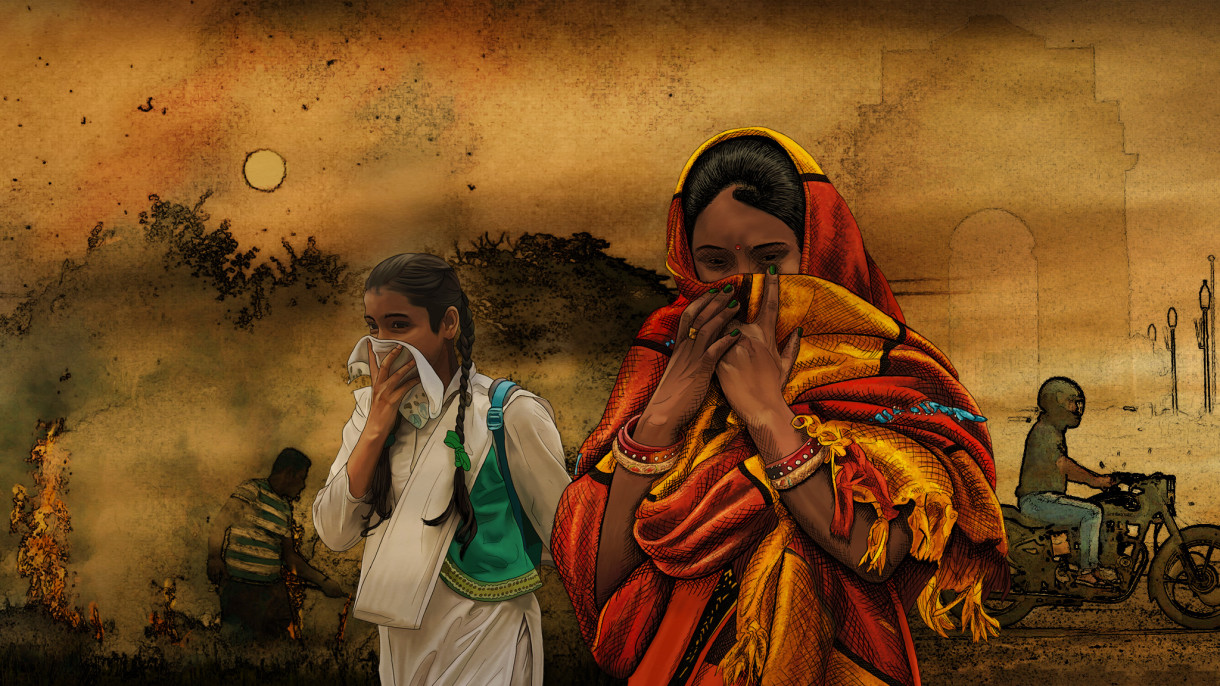Arvind Kumar, a chest surgeon at New Delhi’s Sir Ganga Ram Hospital, has a ringside view of the toll that northern India’s deteriorating air quality is taking on its residents. When he started practising 30 years ago, some 80 to 90 per cent of his lung cancer patients were smokers, mostly men, aged typically in their 50s or 60s.
But in the past six years, half of Dr Kumar’s lung cancer patients have been non-smokers, about 40 per cent of them women. Patients are younger too, with 8 per cent in their 30s and 40s.
To Dr Kumar, the dramatic shift in the profiles of lung cancer patients has a clear cause: air fouled by dirty diesel exhaust fumes, construction dust, rising industrial emissions and crop burning, which has created heavy loads of harmful pollutants in the air.
Even in teenage lungs, Dr Kumar sees black deposits that would have been almost unthinkable 30 years ago. Chronic obstructive pulmonary disease — in short, severe lung conditions — is now India’s largest cause of death after heart disease.
“If these guys are having black deposits on their lungs as teens, what’s going to happen to them 20 years later?” asks Dr Kumar, who last week launched Doctors for Clean Air to raise awareness about the impact of air pollution. “It’s a silent crisis. It’s an emergency.”
The problem is most acute in India but it is not alone. The Financial Times collated Nasa satellite data of fine particulate matter (PM2.5) — a measure of air quality — and mapped it against population density data from the European Commission to develop a global overview of the number of people affected by this type of dangerous pollution.



The results are alarming: not just the number of people breathing in polluted air, but those breathing air contaminated with particulates that are multiple times over the level deemed safe — 10 micrograms of PM2.5 per cubic metre — by the World Health Organisation.
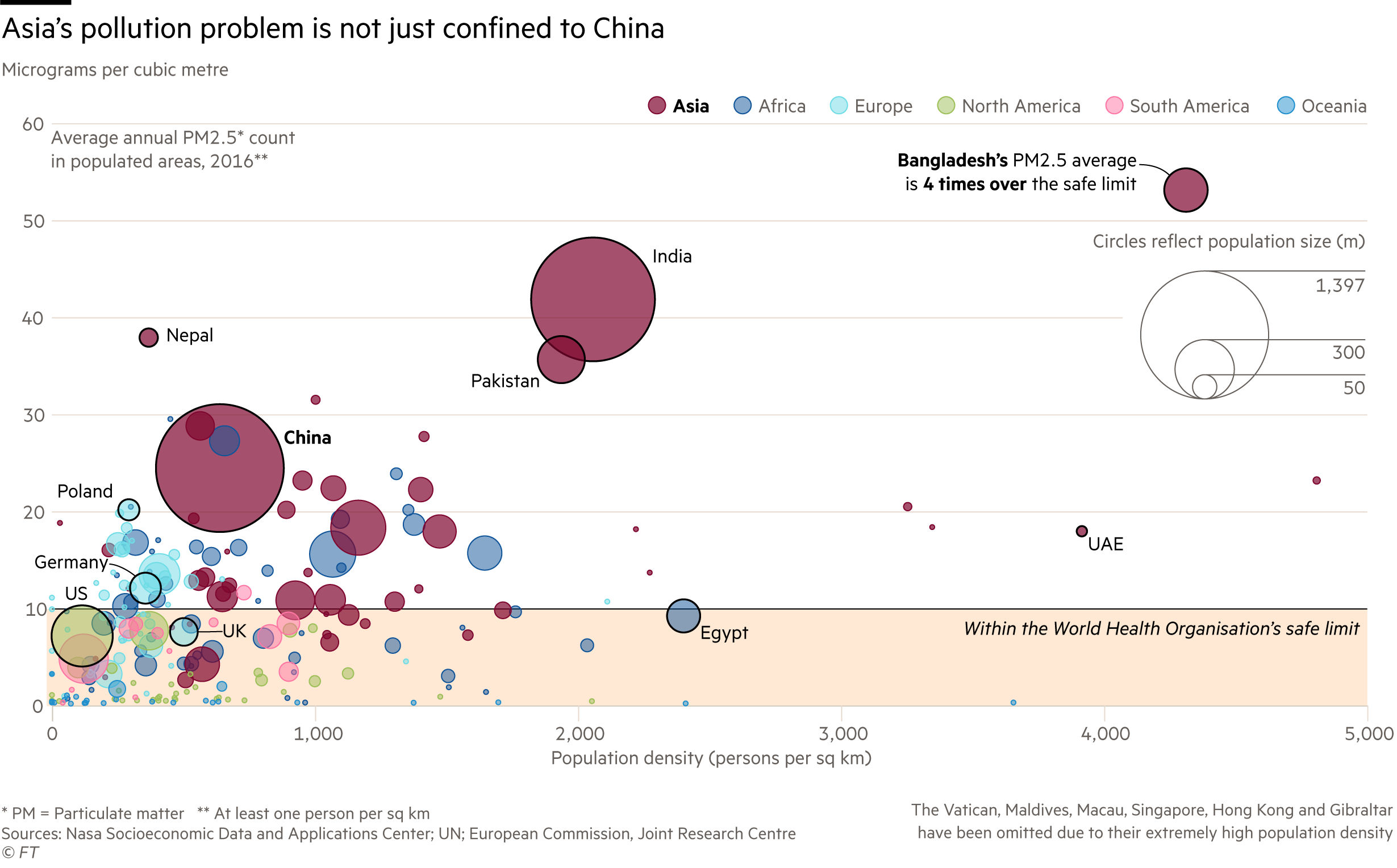
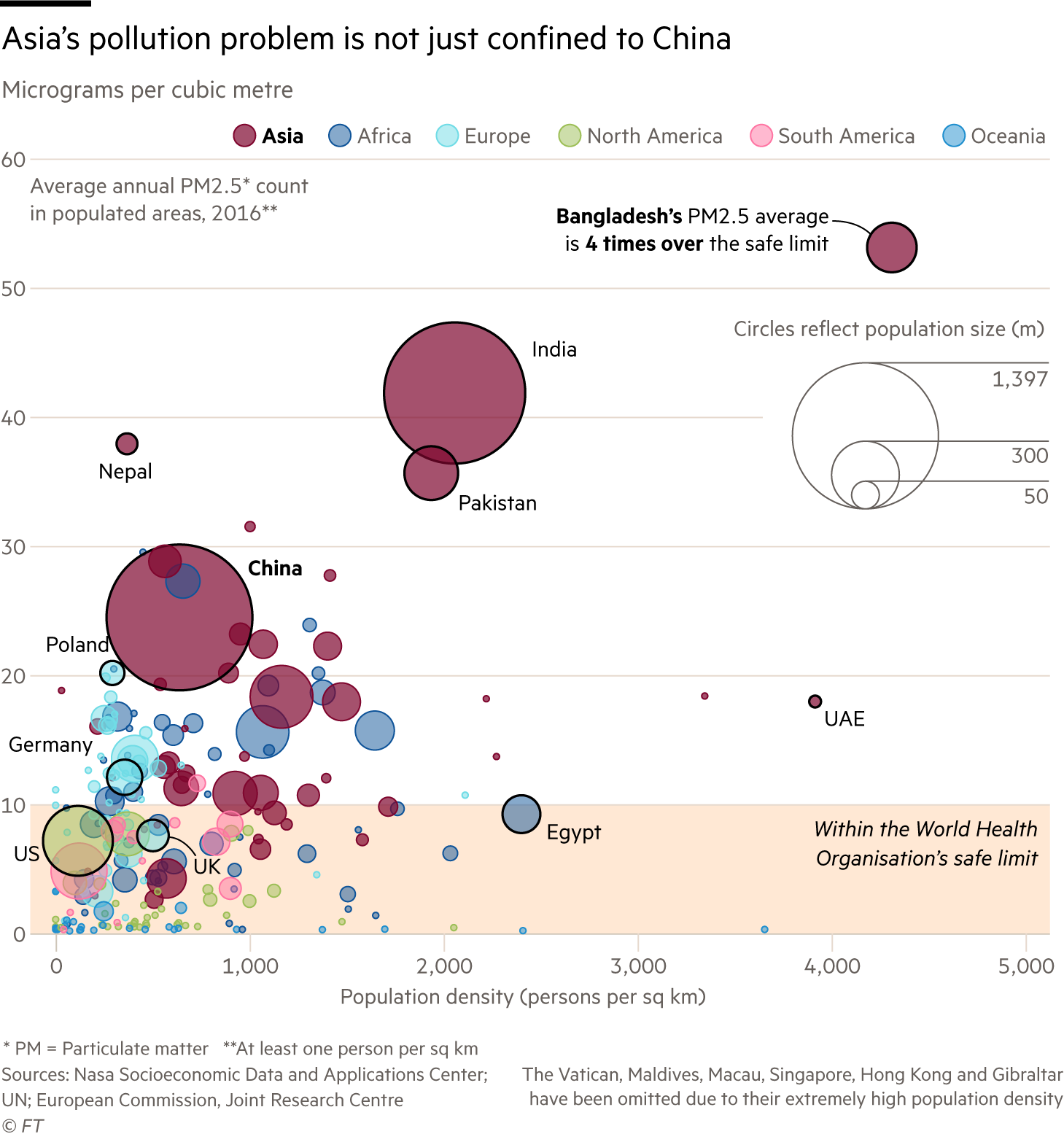
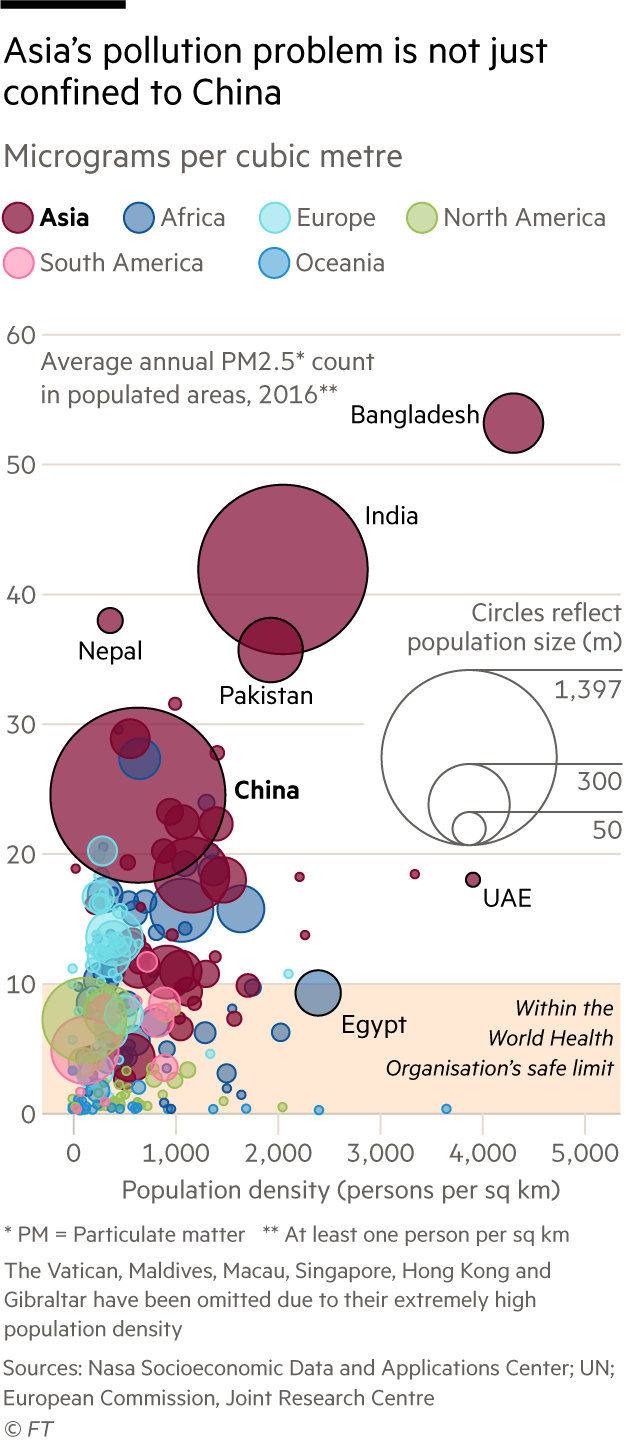
The data show that more than 4.2bn people in Asia are breathing air many times dirtier than the WHO safe limit. It only takes into account areas that are populated to avoid skewing the numbers for countries such as China and Russia that have vast unpopulated regions.
Historically China has grabbed most headlines for poor air quality. But as the time-lapse video of PM2.5 pollution between 1998 and 2016 shows, India is now in a far worse state than its larger neighbour ever was.
The 2016 data, the latest available, show that, although both countries have a similar number of people breathing air above the safe limit, India has far more people living in heavily polluted areas. At least 140m people in India are breathing air 10 times or more over the WHO safe limit.
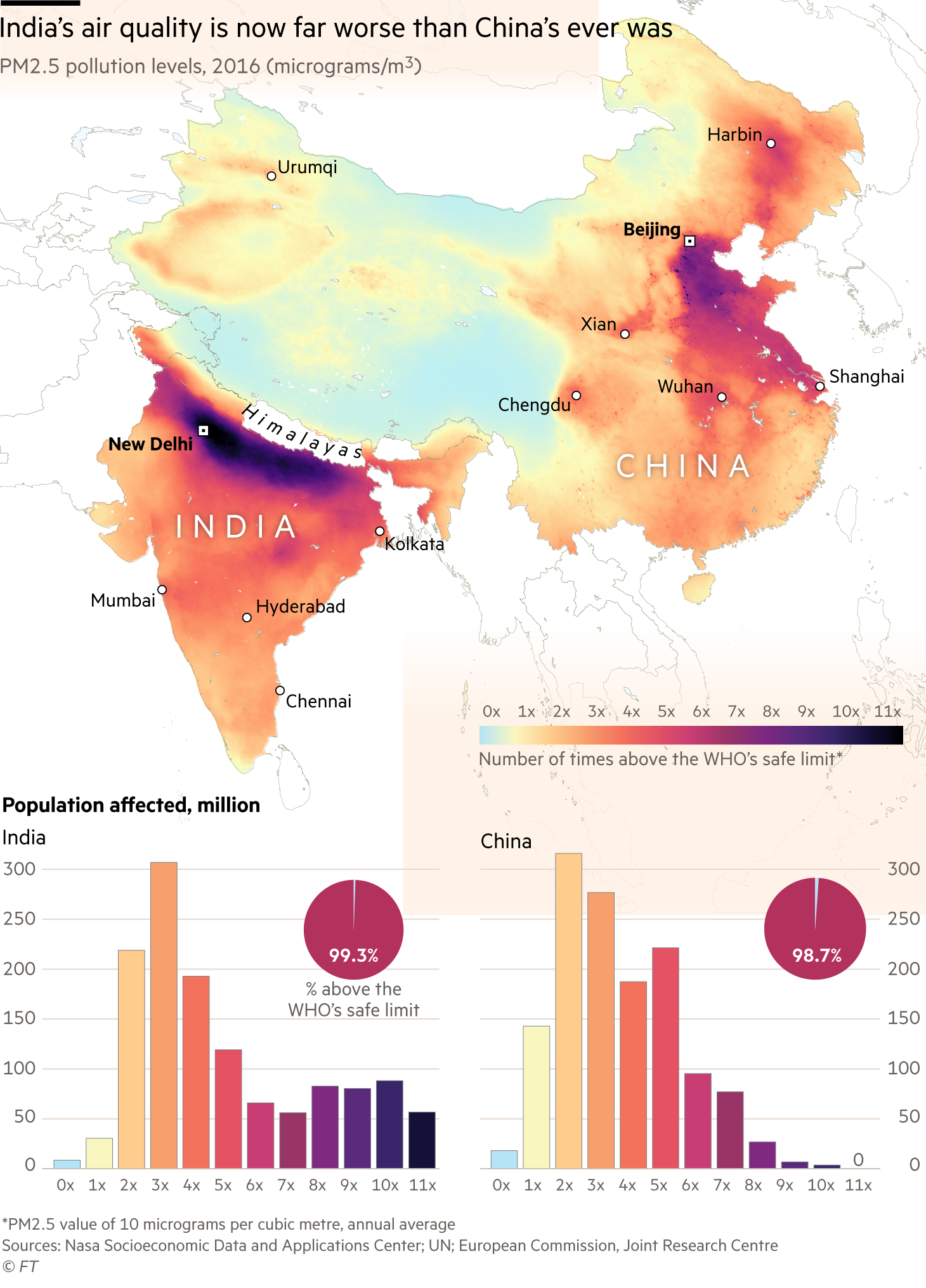

A study published in The Lancet has estimated that in 2017 air pollution killed 1.24m Indians — half of them younger than 70, which lowers the country’s average life expectancy by 1.7 years. The 10 most polluted cities in the world are all in northern India.
Top officials in prime minister Narendra Modi’s government have suggested New Delhi’s air is little dirtier than that in other major capitals such as London.
Harsh Vardhan, India’s environment minister and a doctor, has played down the health consequences of dirty air, insisting it is mainly a concern for those with pre-existing lung conditions. But that appears to fly in the face of international studies that show that air pollution has a wide-ranging impact, including an elevated risk for heart attacks and strokes, increased risk of asthma, reduced foetal growth, stunted development of children’s lungs, and cognitive impairment.
Dr Vardhan has claimed India needed its own research to determine whether dirty air is really harmful to otherwise healthy people — an argument the government also made in the Supreme Court.
Dr Kumar believes New Delhi’s unwillingness to acknowledge the severity of its pollution crisis stems from its reluctance to take strong measures tackle large polluters. Such a crackdown would inevitably upset powerful vested interests in the automotive sector, highly polluting small and medium-sized industries, power plants, construction companies and farmers. And it could hit economic growth ahead of elections next year.
“They are not unaware but, despite being aware, they deny,” says Dr Kumar, “The corrective measures that would be needed are unpleasant, and might make them lose votes rather than gain votes.”
But environmentalist Sunita Narain, director-general of New Delhi’s Centre for Science and Environment, says official attitudes have shifted since last winter’s catastrophic air emergency, when record pollution levels forced schools to close for several days.
“That was a turning point,” says Ms Narain, who has battled India’s air pollution for decades. “There is outrage now against pollution — it is also now much more of a middle-class issue and government is acting because it understands the public health emergency.”
Northern India’s geography means that pollution generated in the region is not easily dispersed because the Himalayas form a barrier to the north, preventing poor air from dissipating. “We are sitting in a region where the wind dies in winter,” says Ms Narain. “Think of it like a big, massive bowl. That is why the ability to deal with the sources of the pollution become critical.”
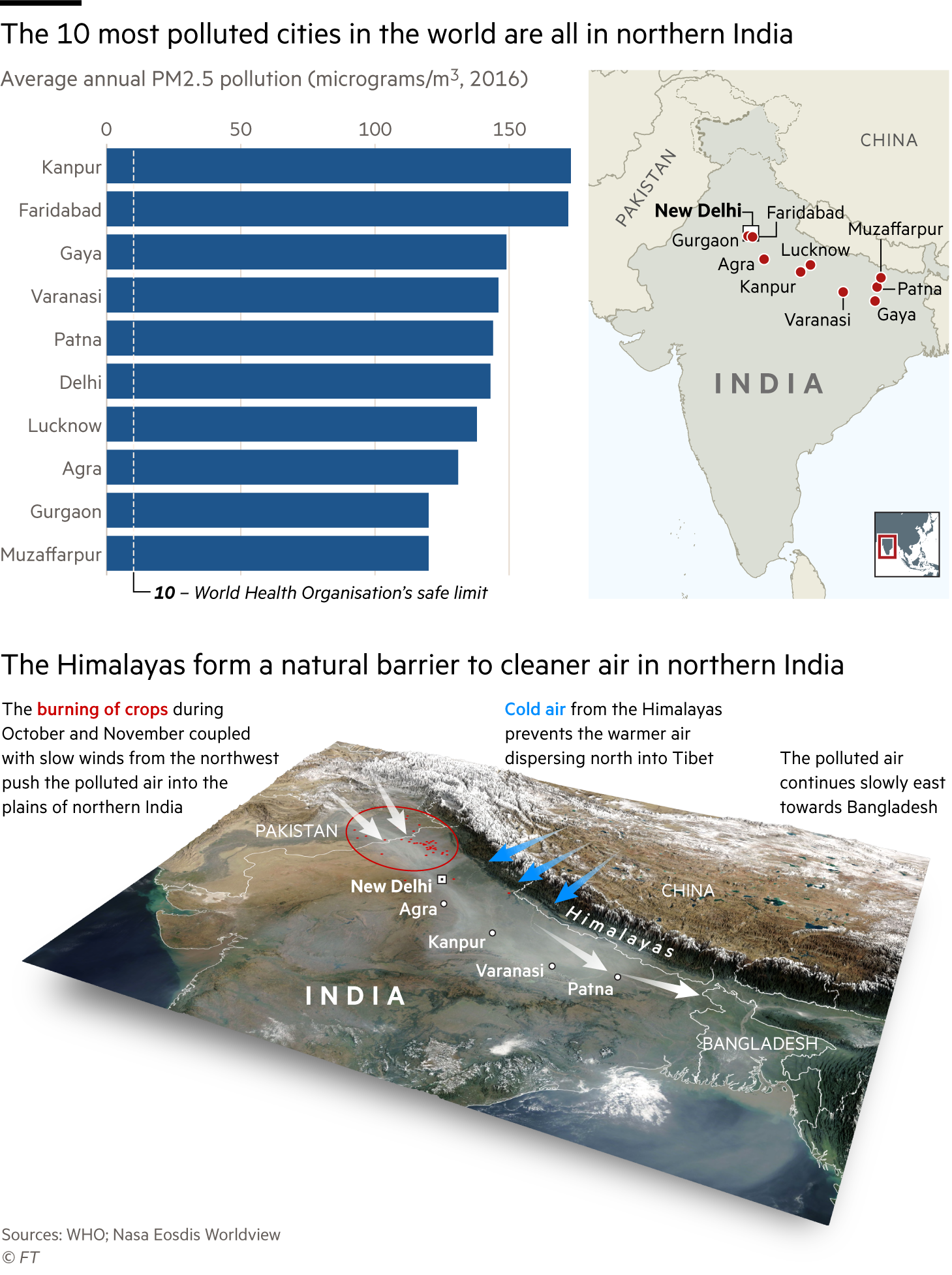

The biggest causes are vehicular pollution, industrial emissions, thermal power plants, construction dust, waste burning and millions of poor households’ use of cheap and dirty fuels such as wood and cow-dung for cooking. Then every November, this heavy mix is exacerbated by millions of farmers in the states of Punjab and Haryana burning rice stubble after their harvests, a cheap way to dispose of otherwise worthless straw.
Yet Ms Narain says New Delhi has taken “very significant steps to combat pollution”, albeit often under Supreme Court pressure in the past two years.
India has advanced the date for stricter fuel and emission norms to 2020, so new vehicles sold after that will be far cleaner. Mr Modi’s government has provided cooking gas cylinders to more than 50m poor households to try to reduce the use of highly polluting biomass cooking fuels, though high gas refill prices means that biomass burning remains a major pollution source.
The UN climate change talks in Poland will discuss this week whether developing countries such as India should be treated differently and given more time to meet emissions targets.
The Modi administration is making an ambitious push to expand renewable energy capacity, including solar power, to help meet rapidly growing power demand. Increased investment has made renewables India’s second-largest generator of electricity.
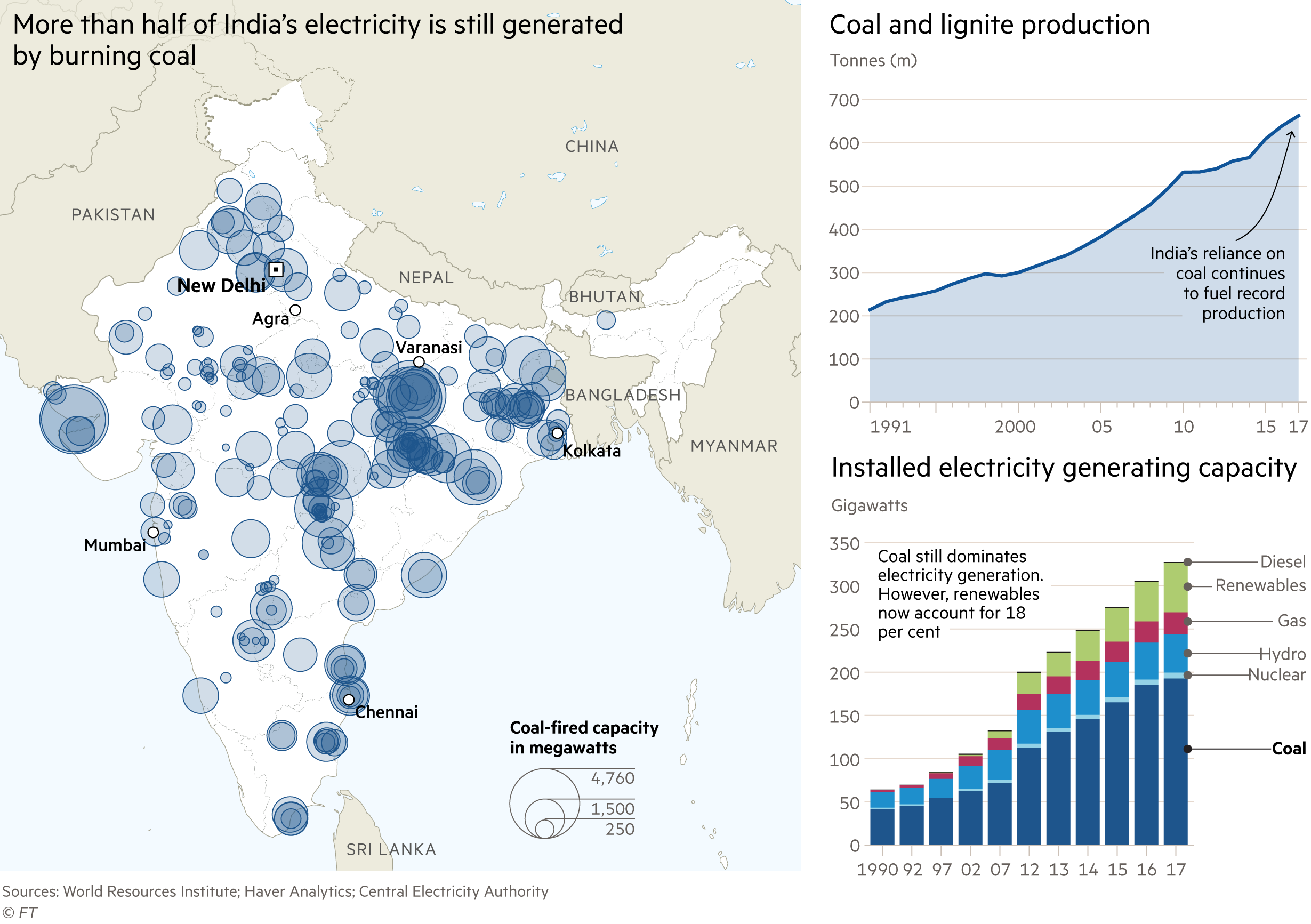
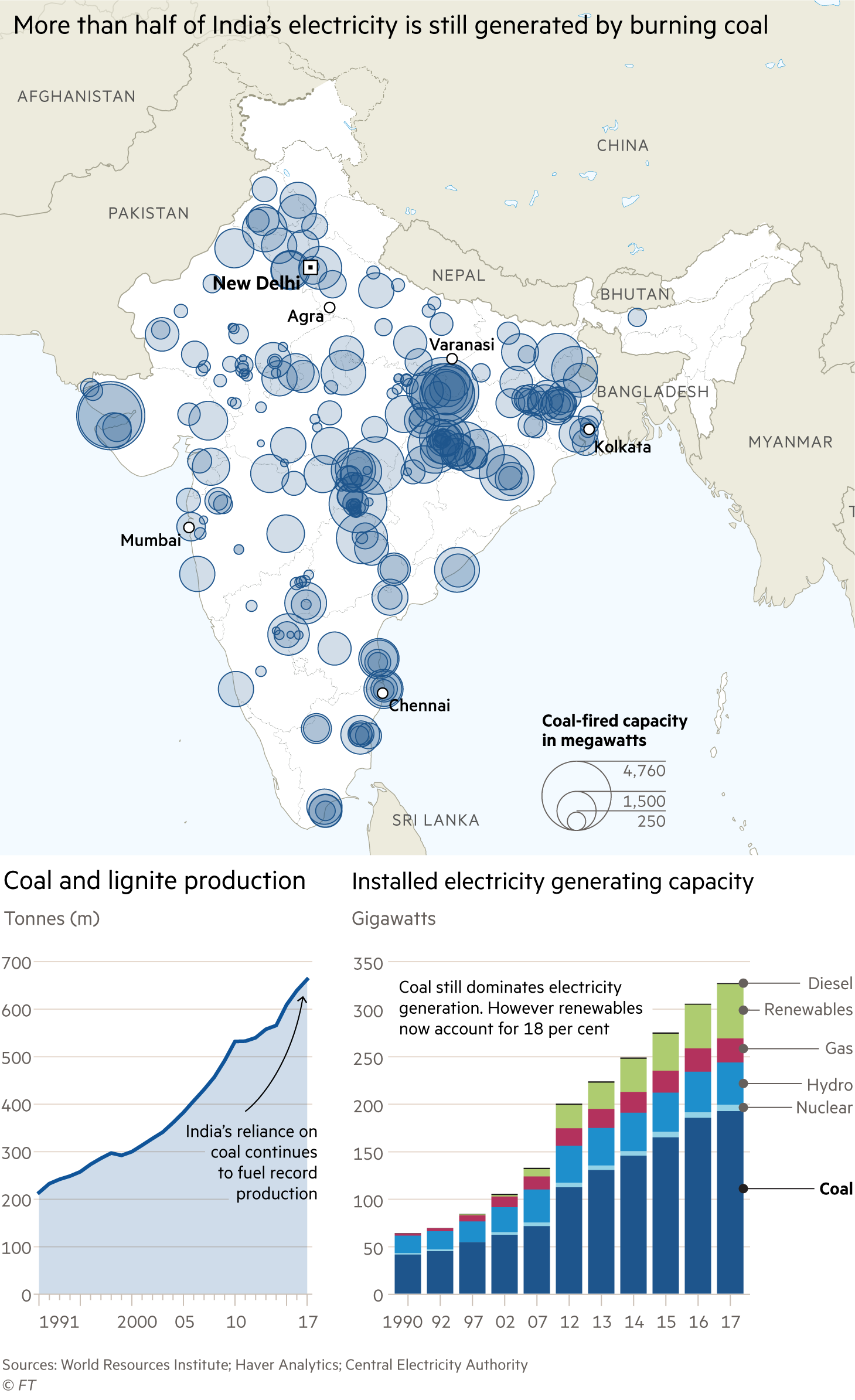

Yet India’s 246 coal-fired power plants — most of them inefficient and highly polluting — account for 60 per cent of India’s total electricity production, with a combined capacity of 188GW, and coal is likely to dominate the country’s energy mix for decades to come.
While India has imposed tough emissions standards for power plants, state utilities, which own many of India’s ageing coal power plants, have failed to comply, though environmentalists are pushing to hold them to account. “The scale of pollution is so high that we will have to do things much more quickly,” Ms Narain says.
That’s where Dr Kumar hopes to help, generating more public pressure for change. “We have to somersault from a position where the government fears reprisal if it acts,” he says, “to one where it fears reprisal if it doesn’t.”
